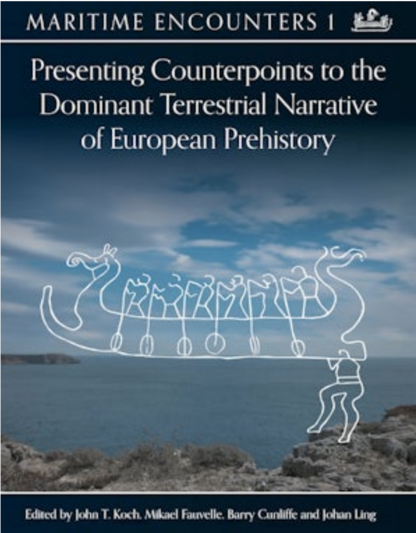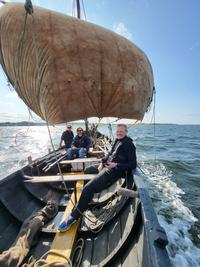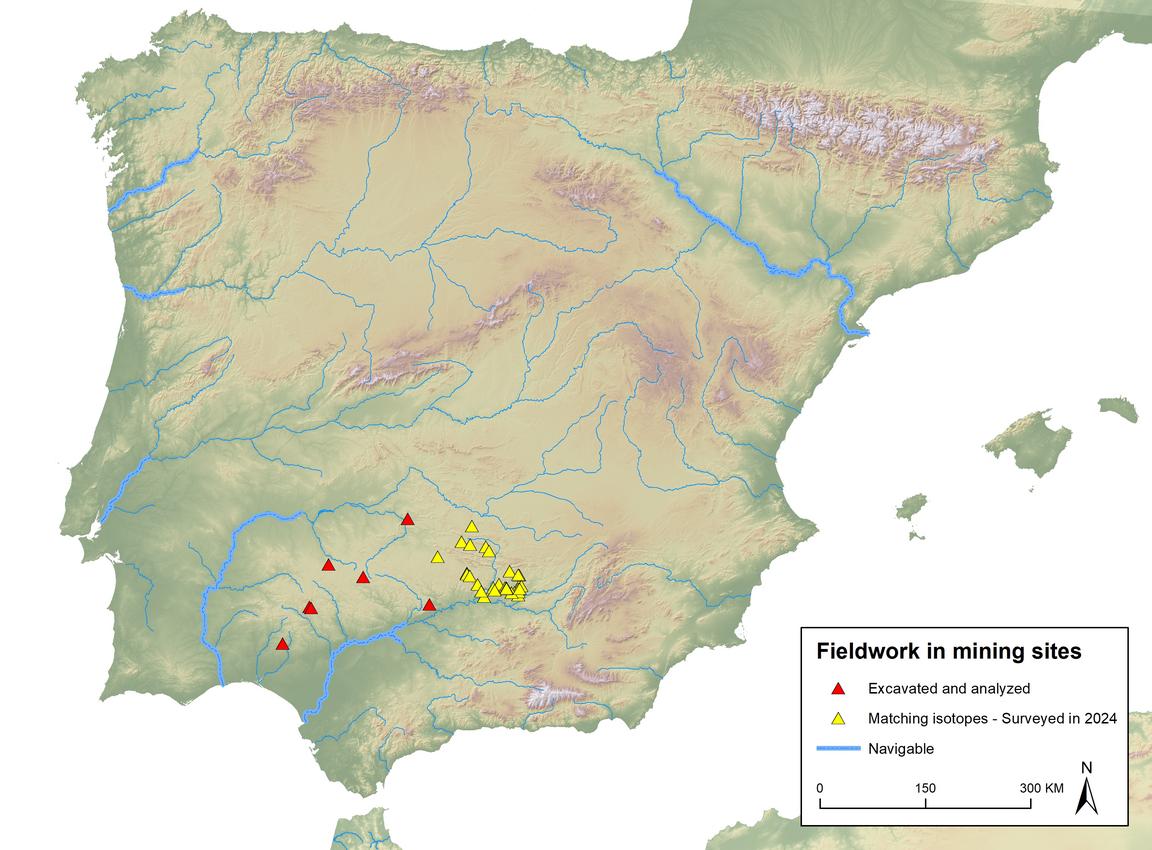
Maritime Encounters
Short description
This project’s central aim is to fill persistent gaps, opened by recent studies based on archaeology and aDNA, to understand maritime dimensions of migration, mobility and exchange along the Atlantic façade from Norway to Iberia. We will investigate the evolution of prehistoric maritime technologies and navigational capabilities on seas, rivers and lakes, and their role in major migrations.
List of publications within the program
Maritime Encounters Book serie
Challenges the terrestrial focus of European prehistory, emphasizing the significance of seascapes, maritime networks, and coastal societies in shaping prehistoric Europe.
Edited by John T. Koch, Mikael Fauvelle, Barry Cunliffe and Johan Ling
Series: Maritime Encounters

Organized conferences

In early June 2024 we held a conference titled "The significance of the boom and bust of Bronze Age mining in Wales for Scandinavia, England, and Atlantic Europe."
Project members were joined by key researchers including Alan Williams, Ben Roberts, Lene Melheim, Dirk Brandherm, Heide Wrobel Nørgaard, Simon Timberlake, Serena Sabatini, and Richard Bradley.
Forthcoming conference 2025-2026
Research program Maritime Encounters
This project’s central aim is to fill persistent gaps, opened by recent studies based on archaeology and aDNA, to understand maritime dimensions of migration, mobility and exchange along the Atlantic façade from Norway to Iberia.
We will investigate the evolution of prehistoric maritime technologies and navigational capabilities on seas, rivers and lakes, and their role in major migrations, including:
- direct and indirect evidence for prehistoric boats and boat building, exploitation of marine resources;
- maritime and other water-based movements of humans, animals, lithics, metals, amber and other valuable raw materials;
- model ancient sea crossings and navigation using novel methods from oceanography;
- the contribution of indigenous knowledge and traditions to innovations at each stage and transitional episode;
- the respectively roles of down-the-line versus direct long-distance contact in moving people, materials, ideas and languages.
Four subprojects within the program
- The encounters of ~3400–2300 BC between the Pitted Ware Culture in Scandinavia and pastoral groups with steppe ancestry who crossed the Baltic and Kattegat and Skagerrak. (subproject 1)
- The encounters between the Bell Beaker/Beaker cultures and indigenous groups along the Atlantic façade ~2800–2100 BC. (subproject 2)
- Long-distance interaction developing between Scandinavia and the metal-rich Atlantic façade ~2100–1400 BC. (subproject 3)
- Maritime connections extending from Scandinavia to Iberia. ~1400/1300–600 BC. (subproject 4)
Our ultimate objective—a synthetic transdisciplinary overview of European prehistory from a maritime perspectiv is ambitious, carrying the potential risk of overreaching. Therefore, our work plan focuses tightly on four specialised subprojects in research areas in which the participants and participating institutions have relevant world-recognised expertise and track records.
Each Subproject will yield new high-quality datasets to fill lingering gaps in the understanding of Europe’s maritime and riverine prehistory.
Mikael Fauvelle , Subproject 1
Dr Marc Vander Linden, Subproject 2

Professor Johan Ling, Subproject 3
Dr Marta Diaz-Guardamino, Subproject 4
Research areas
We propose a transdisciplinary approach building on data, methods, and theories from six discourses.
International and cross disciplinary
- Archaeology
- Oceanography
- Archaeogenetics
- Archaeolinguistics
- Social theory
Researcher with in the program
Program team: Professor Johan Ling, Professor Sir Barry Cunliffe, Dr Marta Díaz-Guardamino, Dr Marc Vander Linden, Dr Christian Horn, Professor Johan Koch, Professor Marcos Hunt Ortiz, Professor Alvaro Montenergo, Dr Magnus Artursson, Dr Aurélien Burlot, Dr Boel Bengtsson, Dr Guus Kroonen, ProfessorMartin Sikora, Dr Serena Sabatini, Dr Knut Austvoll, Dr Zofia Stos- Gale, Dr Cecilia Lindhé, Professor Richard Chacon, Dr Mikael Fauvelle.
News and media about Maritime Encounters
"Maritime Encounters is collaborating with the Viking Ship Museum in Roskilde to produce a new book on the Bronze Age Varpelev boat find. As a part of this collaboration project members sailed an experimental Viking ship together with Morten Ravn and Ole Kastholm. In the photo you can see Morten Ravn together with ME project members Mikael Fauvelle, Johan Ling, Magnus Artursson, and Boel Bengtsson."

News from subproject 4












